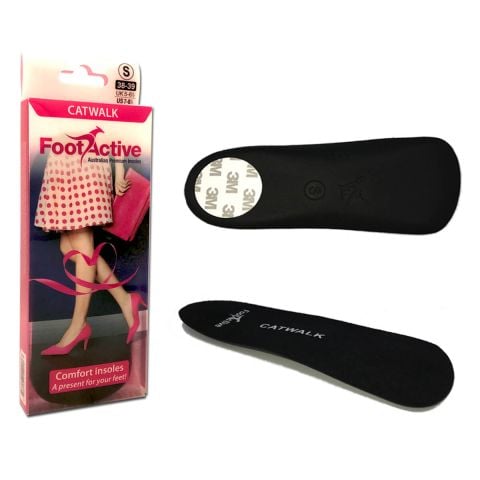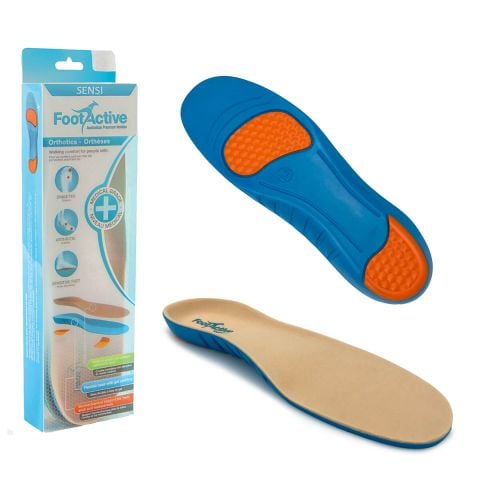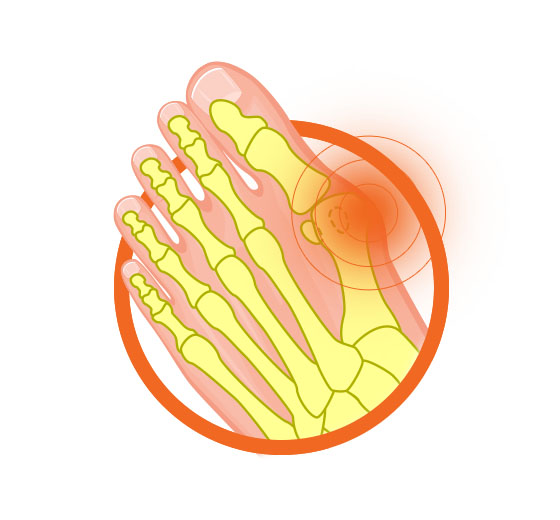What Causes Bunions?
Although the cause of bunions can be hereditary, they can also be due to faulty foot mechanics. This is typically due to excess pronation, or a fallen arch, which causes the metatarsophalangeal joint (MTP) to become enlarged and inflamed. As the joint gets more and more enlarged, this will begin to angle the big toe towards the second toe and form a lump on the side of the foot.
Beyond excess pronation, bunions can also be caused by wearing footwear that is too tight or ill-fitting, whereby the toes are squeezed together. In some cases, this may just be a contributing factor or can be the main cause, dependant on the individual case.
Sometimes, bunions can also be caused by inflammatory conditions, such as rheumatoid arthritis or other neuromuscular conditions, such as polio. Symptoms often include pain and tenderness, redness, hardened skin on the bottom of the foot, a callous or corn on the bump and restricted motion in the big toe.
Bunion Pain Treatment
Although surgical bunion treatments, such as a metatarsal osteotomy, are readily available, those who seek relief from bunion foot pain can also utilise a number of non-surgical alternatives. This form of bunion foot pain home treatment is inclusive of insoles, changes in footwear, padding, and more. This can also differ, depending on the footwear you typically wear on a day-to-day basis and the bunion pain treatment you are most comfortable with.
Bunion Pain Treatment (In Women’s Fashion Shoes)
Bunions can often be caused by ill fitting shoes that are worn for fashion. These can worsen bunions on the feet due to the added pressure against the side of the feet. Bunion pain treatment such as FootActive’s Catwalk or specially designed high-heel arch support insoles can help by re-distributing weight whilst wearing heels, reducing pressure on the ball of the foot area and thereby helping to prevent the further formation of bunions on the feet.
The metatarsal support will help reduce pressure and friction, placed on the big toe joint, in turn providing relief from bunion pain. If you are still suffering from bunion pain despite the support of Bunion treatment insoles, consider wearing flatter, looser-fitting shoes.
Treatment Of Bunions (Normal, Flat Shoes)
Bunions are not just limited to women wearing high heels. What causes bunions developing in men can also be due to wearing normal flat footwear as well as hereditary or inflammatory diseases. To ease bunions and help prevent further development, wearing FootActive Sensi orthopaedic insoles can greatly assist with support and reduce the overall pressure of pronation as an effective bunion treatment.
Furthermore, make sure that your shoes have a roomy toe box when you’re going to be on your feet a lot. If you have any pressure from your shoe on the bunion, or if your bunion is red and inflamed on the outside, then you should have a pocket stretched into your shoe to accommodate.
Bunions FAQs
Will a bunion cause osteoarthritis in my big toe?
Bunions on your feet may cause osteoarthritis, but this is not always the case. Osteoarthritis is often caused by wear and tear within the cartilage of your toe and the end of your bones gets rougher and thinner.
Your big toe joint is more prone to osteoarthritis than any other joint in your foot. This is because of the repeated pressure you put on it when you walk. If you already have osteoarthritis in your big toe, you may be more likely to get a bunion. What causes bunions is when you put up with this pain and leave it unchecked, which is why you should always consult a physician if you suspect you may have bunion foot pain.




